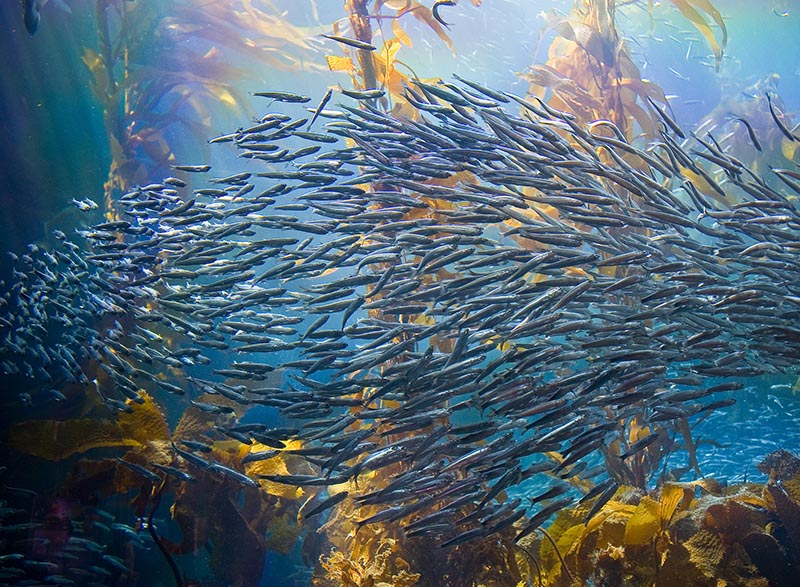What do forage fish and real estate have in common? Location, location, location.
A new study led by University of Washington fishery science Professor Ray Hilborn reveals some surprising relationships between predator success and prey abundance.
The paper, “When does fishing forage species affect their predators?” was published Monday in the journal Fisheries Research in response to the 2012 Lenfest Report, which set the recent standard for forage fish management by asserting that an across-the-board reduction in the commercial harvest of forage fish would result in higher numbers of fish species that prey on them.
“It looked reasonable that if you appropriate half of the production of a prey species by a fishery that you can’t support so much production of predators,” said Carl Walters, professor emeritus of the University of British Columbia’s Institute for the Oceans and Fisheries. “That seemed perfectly reasonable. It was just wrong.”
According to this study, prey species follow the real estate principle of investing in prime locations. When forage fish are abundant, the research shows, their population spreads over a wider area, creating smaller subpockets around a core reproduction zone. When they’re in low abundance, they retract to the core region. Successful predators keep their breeding grounds close to that core region, maintaining access to food even in times of low prey biomass.
“These animals have evolved together, and top predators have somehow developed some strategies of how to cope with the natural variability of these individuals,” said Ricardo Amoroso, professor of marine and coastal sciences at Rutgers University. “We see periods of high recruitment and then periods of low recruitment, and it doesn’t seem to be related to the stock abundance but more to environmental conditions.”
Food, water temperature, upwelling all cause sardines to fluctuate drastically naturally. Past studies have ignored the natural variation of forage fish populations from year to year.
“One of the things we did in this study was to collect together lot of time series patterns of predator abundances and forage fish abundances, and we just didn’t see the correlation. Nor have other scientists that have looked at this objectively,” Walters said.
If we could account for the natural ebbs and flows of oceanic and weather conditions that can cause dramatic swings forage fish populations, perhaps we’d be able to predict the effects of commercial harvest as one of many factors on forage fish biomass. The Lenfest Report was based on the simple assumption that bigger numbers of prey beget bigger numbers of predators. As Walters said, it’s a reasonable place to start. It just doesn’t turn out to be entirely true or even remotely feasible.
We could never guarantee a minimum biomass for prey and predators even if we stopped fishing them altogether, because prey species have their own natural and massive fluctuations, regardless of fishing effort.
“Major fluctuations in forage fish abundance have been observed and recorded for centuries,” notes a previous paper by Boersma Pikitich et al. “Forage fish can respond dramatically to shifts in oceanic conditions and may exhibit strong decadal-scale variability.”
While we can connect events like El Niño with population booms and busts, we are still not close to being able to predict the severity of those shifts or their effects on forage species.
This new information expands our knowledge of forage fish populations, their relationship to successful prey species and the fact that fishing effort is not the only (and oftentimes not even the most significant) factor in fishery abundance.
This study is a reminder that we cannot (yet) predict the behavior of a massive web of prey and predator species, nor should we assign them arbitrary definitions of ideal biomass. Even eliminating fishing cannot bring back a species if the conditions are not right for its return.
There are no easy answers because this is not a simple equation. We can only continue to question the things we think we know and to strive for healthy, sustainable, and profitable fisheries.
When Does Fishing Forage Species Affect Their Predators? from Saving Seafood on Vimeo.








